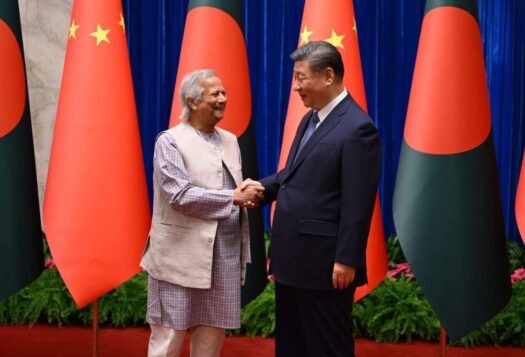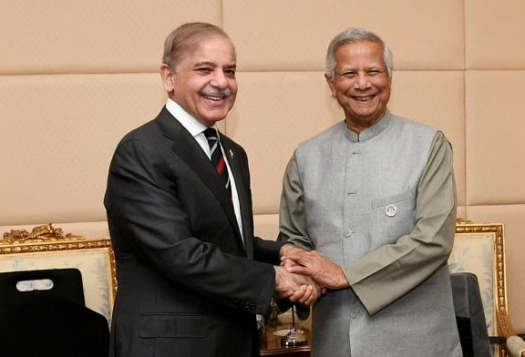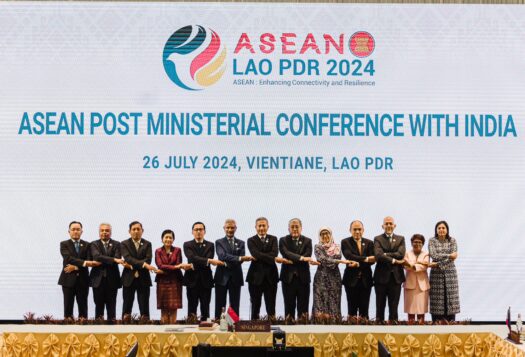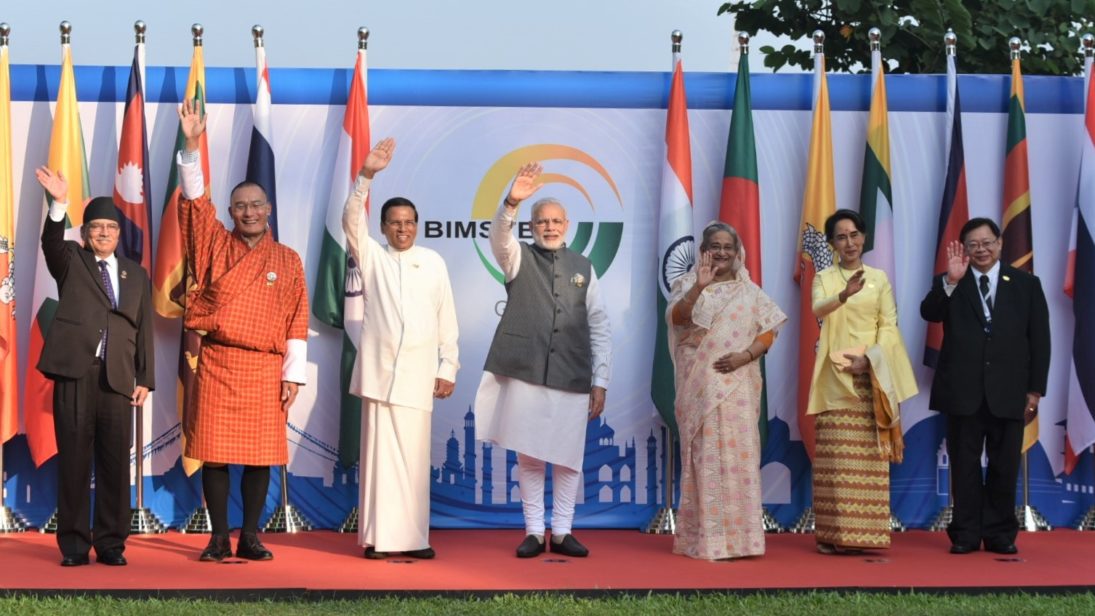
Though India has been revitalizing its relations with countries across the world, its diplomatic skills have often been found wanting when it comes to dealing with its own neighborhood. New Delhi’s shortcomings in the South Asian region can be seen in many smaller South Asian countries opting closer ties with China over India. For instance, Nepal recently pulled out from the first joint military drill of Bay of Bengal Initiative for Multi-Sector Technical and Economic Cooperation (BIMSTEC) in India, choosing instead to participate with China in a joint military exercises for 12 days.
Rapidly shifting political conditions in several South Asian countries and a lack of personal diplomacy among political leaders of the region further negatively impact the stability of India’s relations with its neighbors. The most pressing regional challenge for India today in this realm are the increasing infrastructure projects led by China. To rectify this, India must reset ties with its partners in the neighborhood. Although India can by no means afford to replicate Chinese economic assistance throughout the region, India can and should provide an alternative to willing neighbors by providing access to substitute infrastructure projects while collaborating with other partners.
Power Struggle Between India and China
India needs to be careful to not come across as interfering with the strategic autonomy of its smaller neighbors. This is not easy, given that India faces the increasing influence of China in its vicinity. Yet whenever India has been seen to push its neighbors to a corner, the foreign policy repercussions have been counterproductive to India’s interests.
The power asymmetry between India and China and the latter’s strategic entry in India’s vicinity creates challenges in India’s traditional sphere of influence. Beijing has created an alternative to New Delhi for smaller South Asian countries, which can now hedge between two of the largest economies in the world. China’s economic prowess has enabled it to deliver infrastructure projects in countries like Sri Lanka, Nepal, Bhutan, and especially Pakistan. It also intensifies China’s deep-rooted strategic ties in the region, to the detriment of India’s interest in its backyard. Beijing’s increasing footprint in the region includes the development of Hambantota port in Sri Lanka, economic aid and assistance to Nepal, and the swelling of Chinese tourists in Bhutan. As part of its flagship program of Belt and Road Initiative (BRI), Beijing has also provided various infrastructure and connectivity projects in the area, including the development of the Chittagong port and Bangladesh Industrial Park in Dhaka and the signing of a free trade agreement with the Maldives, which will open its fisheries to the global market. Another project under the wider umbrella of BRI is the China-Pakistan Economic Corridor (CPEC), which has raised eyebrows in India because it slates through Pakistan-administered Kashmir.
China’s emergence in South Asia challenges India’s politico-economic linkages with its smaller neighbors. When India has allegedly resorted to political arm twisting for its own gains, these moves have been counterproductive and naturally affected India’s relations with these countries negatively. An example of this can be seen in the aftermath of the 2015 blockade, which resulted in pushing Nepal closer to China. Thus, India needs to be careful to not come across as interfering with the strategic autonomy of its smaller neighbors. This is not easy, given that India faces the increasing influence of China in its vicinity. Yet whenever India has been seen to push its neighbors to a corner, the foreign policy repercussions have been counterproductive to India’s interests.
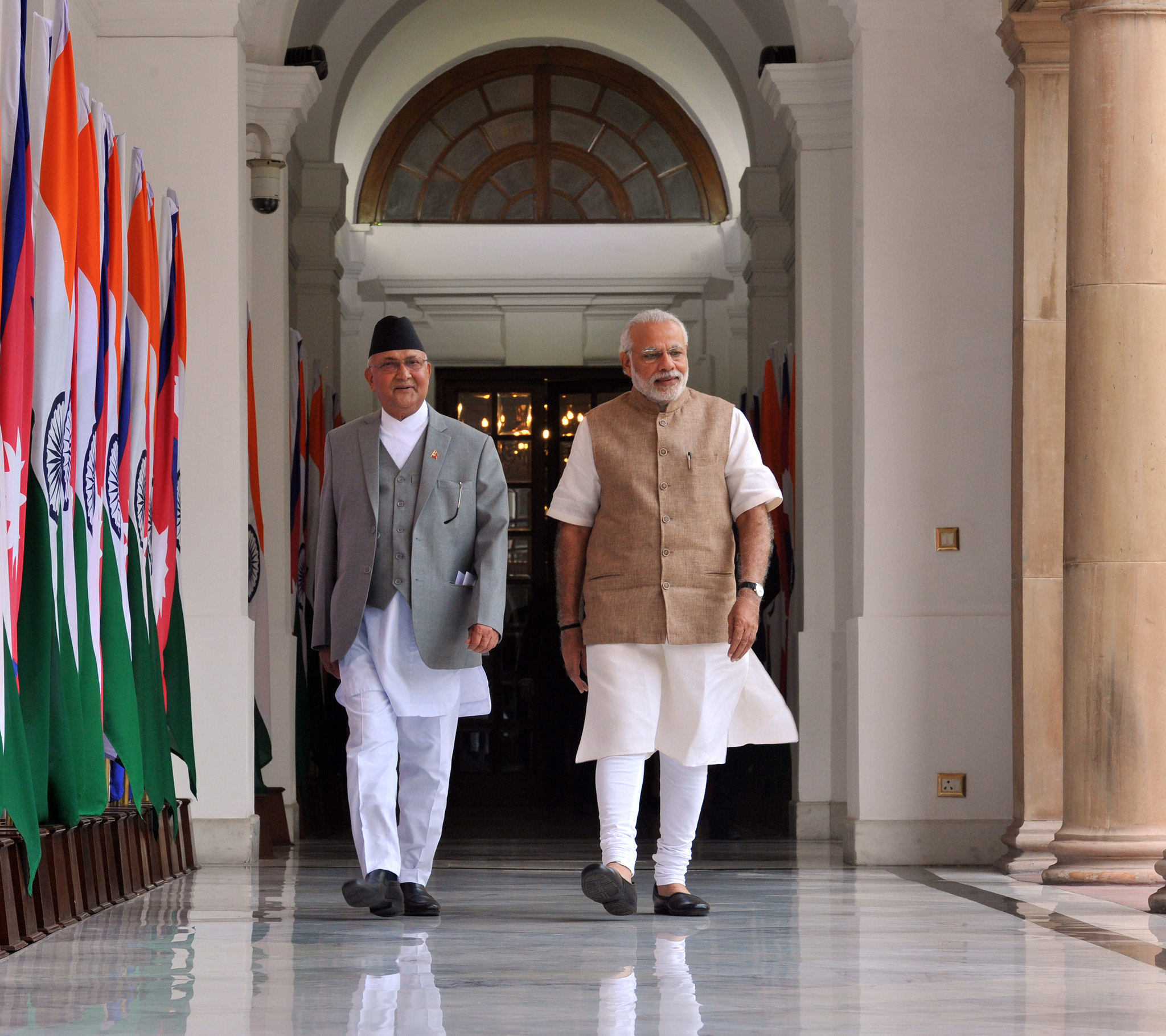
China’s Regional Influence at the Expense of India
Recently, China has provided bait to Bhutan to actively support the BRI project in return for a development bonus, which can be shared bilaterally. This is important to note since Bhutan was the only South Asian country, other than India, to have not attended the Belt and Road Forum (BRF) in China. Such China-Bhutan dynamics have been disconcerting in India, upon whom Bhutan has historically been heavily dependent.
Similarly, in Nepal, Chinese investment in various infrastructure projects like telecommunications, hydroelectricity, road development, and others have made India’s role secondary. China recently signed a transit agreement with Nepal in September 2018, which will allow goods coming into Nepal from other countries to use Chinese ports, thus further reducing Nepal’s dependency on India.
Chinese inroads into Sri Lanka through infrastructure investments and the entry of Chinese submarines into Sri Lankan waters have also been of major concern to India. Any political change in Sri Lanka has often been analyzed under the pretext of pro-India or pro-China dispensations. As such, the current fluidity seen in Sri Lankan politics requires India to be proactive in its responses, as the re-emergence of old political actors like Mahinda Rajapaksa and the changing fortunes of Sri Lanka’s current polity including President Sirisena and Prime Minister Wickremesinghe will present challenges for India in terms of its preparedness. Since Rajapaksa’s tenure was always seen as close to China and to the detriment of India, any chances of its return to Sri Lankan politics is something India should watch out for.
With regard to Bangladesh, despite relative bonhomie in India-Bangladesh relations under the prime ministership of Sheikh Hasina, no new ground has been broken in significant bilateral issues like in the case of the negotiations over the Teesta River Water Sharing Agreement. Meanwhile, China has capitalized on opportunities in Bangladesh through the development of the Chittagong port and the Bangladesh Industrial Park. In addition to the wide economic projects like the construction of airports, railway tracks, power plants, it is also providing large number of scholarships for Bangladeshi students to study in Chinese universities, and also has opened a Chinese language center in Bangladesh University.
The Way Forward for India
New Delhi needs to understand that it cannot offer what China can in terms of pouring money into the economies of South Asia.
Although India’s regional engagement is decades old, what is different today are the rapidly changing geostrategic realities within South Asia with the growing influence of China, which brings India’s role in its own vicinity into question. Such changes also require a reset in India’s thinking and approach towards its neighbors. It is high time that New Delhi conducted a sober reassessment of the expected outcomes of its political and economic investments in its neighborhood.
Nonetheless, New Delhi needs to understand that it cannot offer what China can in terms of pouring money into the economies of South Asia. According to the estimated figures for 2016-2017, China’s investment in the region has been astronomical, amounting to $13.87 billion to Bangladesh, $3.11 billion to Sri Lanka, $1.34 billion to Nepal, $970 million to Maldives, and $12.9 billion to Pakistan.
Instead, India ought to play on its strengths, focusing on providing substitute infrastructure projects, such as road networks in border regions, and building an environment of trust in the region rather than engaging in a step by step comparison with China. Such initiatives can be pushed ahead by working with other interested countries, such as Japan. To this end, New Delhi might augment its regional leadership role in multilateral initiatives like BIMSTEC, creating leverage for the promotion of its own interests while taking into consideration the development and progress of the entire region.
***
Image 1: MEAphotogallery via Flickr
Image 2: MEAphotogallery via Flickr
